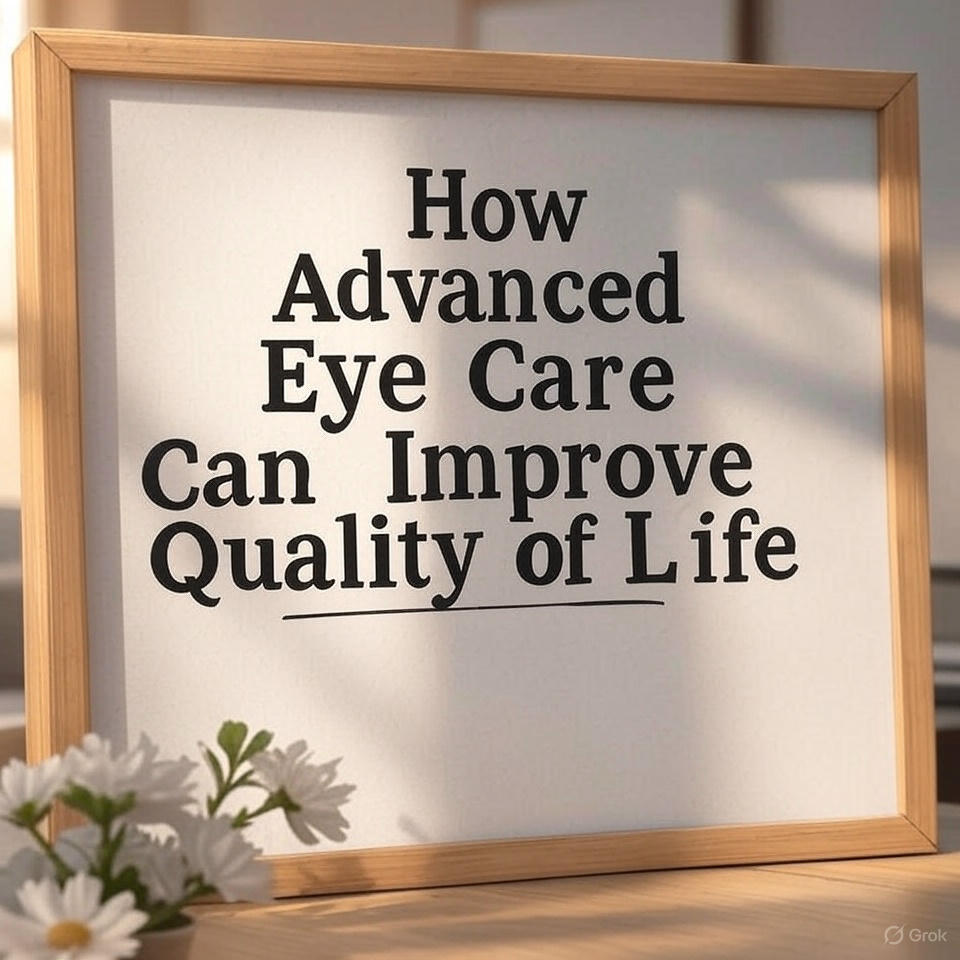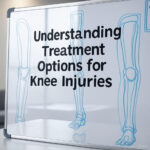Our eyes really are our windows to the world. When vision starts to slip, simple things—like reading or driving—suddenly feel a lot harder. Advanced eye care steps in with solutions that do more than just sharpen vision.
Modern eye treatments can make a real difference by tackling issues that get in the way of work, hobbies, and independence. Things like laser surgery, high-tech contact lenses, and early detection screenings help people hang onto their vision for longer.
Thanks to these advancements, folks with eye conditions can keep doing what they love—driving, reading, or just enjoying a good movie. Better eye care can also cut down on headaches, eye strain, and the risk of losing vision altogether.
Understanding the Benefits of Advanced Eye Care
Modern eye care brings a lot to the table. It’s not just about better vision—these treatments catch problems early, boost independence, and offer care tailored to specific needs.
Preventing Vision Loss Through Early Detection
Advanced diagnostic tools spot eye problems before you even notice symptoms. Regular comprehensive exams use tech like OCT (Optical Coherence Tomography) and digital retinal imaging to catch issues at their earliest stages. When doctors catch glaucoma early, they can treat it before it does any real harm. The same goes for macular degeneration and diabetic retinopathy.
Screenings can flag risk factors before a disease even shows up, which is especially important if eye problems run in your family. Many serious eye conditions creep up quietly, causing no pain or obvious vision changes until the damage is done. Advanced screening gets around this by finding problems when they’re still easy to treat.
Enhancing Daily Function and Independence
The right vision correction makes everyday life a whole lot easier. Reading, driving, scrolling through your phone—they all get simpler with the right prescription. Advanced lens technologies go way beyond basic glasses. Multifocal and progressive lenses let you see clearly at every distance—no more swapping between pairs.
Contact lens wearers have it better than ever, too. Innovations like extended-wear lenses and materials designed for dry eyes make contacts more comfortable and convenient. Procedures like LASIK can permanently correct vision, freeing people from glasses or contacts altogether. Technology has made these surgeries safer and more precise.
With the right vision care, especially for older adults, independence often grows. That means a better quality of life and fewer accidents.
Supporting Eye Health for Specific Conditions
Eye care specialists now offer targeted treatments for a range of conditions. Dry eye syndrome? Prescription meds, special eye drops, and in-office procedures like punctal plugs can help. Keratoconus, which thins the cornea, can be managed with corneal cross-linking to strengthen the cornea and slow the damage.
People with age-related macular degeneration often get anti-VEGF injections to slow disease progression and sometimes even improve vision. For diabetic eye disease, close monitoring and treatments—like laser therapy or medication—can prevent complications by slowing abnormal blood vessel growth.
Every eye condition needs its own approach, and modern eye care delivers that with the right expertise and up-to-date technology.
Cataract Treatment in Singapore
Cataract treatment in Singapore surgery scene is world-class. Most procedures take under 30 minutes and you’re out the same day. You can get premium intraocular lenses that fix astigmatism, presbyopia, and other issues all at once. Multifocal and toric lenses often mean less reliance on glasses after surgery.
Eye surgeons in Singapore use femtosecond lasers for blade-free cataract removal, which bumps up precision and usually speeds up recovery. Post-op care is thorough, with clear instructions and follow-ups. Most folks notice a big improvement in vision just days after the procedure. Surgery costs vary depending on the lens and surgeon, but you’re getting top-notch quality and results—so it’s often worth the investment.
Improving Comfort and Reducing Eye Strain
Staring at screens all day? Digital eye strain is real. Advanced eye care can help with blue light filtering lenses and anti-reflective coatings. Eye care pros also recommend simple ergonomic tweaks at work—like adjusting your monitor, lighting, and taking breaks—to ease strain. Special eye drops offer quick relief for tired, dry eyes, especially if you wear contacts.
For chronic dry eye, treatments like LipiFlow unclog oil glands in the eyelids, making tears work better and easing discomfort. Even small habits—like the 20-20-20 rule (look at something 20 feet away for 20 seconds every 20 minutes)—can help keep digital eye strain at bay.
Innovations in Eye Care and Their Life-Changing Impact
Eye care has come a long way lately, with technology that seemed wild just a decade ago. These breakthroughs are giving new hope to people with all sorts of vision issues.
Cutting-Edge Treatments for Age-Related Eye Diseases
Anti-VEGF therapy changed the game for age-related macular degeneration (AMD). These injections block abnormal blood vessel growth that hurts vision. With regular treatment, many patients keep their sight for years.
Micro-stent implants give glaucoma patients another option besides daily drops. These tiny devices, smaller than a grain of rice, lower eye pressure with less fuss and a much faster recovery than standard surgery.
Gene therapy is opening doors for inherited retinal diseases. Treatments like Luxturna target specific mutations and can restore vision in some forms of retinal dystrophy. Clinical trials look promising, even for conditions once thought untreatable. Artificial retinas are offering hope to people with severe retinal damage. These implants connect to healthy cells that remain and, in some cases, restore basic sight for those with major vision loss.
Personalized Vision Correction Options
Wavefront-guided LASIK lets surgeons customize vision correction with incredible accuracy. It maps every tiny imperfection in your eye, so the fix is as precise as possible.
Refractive lens exchange allows doctors to swap out the eye’s natural lens for a high-tech artificial one. These lenses can tackle several vision problems at once, so you might not need glasses at any distance.
Corneal inlays and crosslinking treatments are new options for folks who can’t get standard corrective surgery. They help people with thin corneas or progressive conditions keep their vision as sharp as possible.
Advanced Diagnostic Technologies
OCT (Optical Coherence Tomography) scanning gives us detailed cross-sectional images of the retina and optic nerve. With this tech, doctors can often spot diseases like glaucoma and macular degeneration long before symptoms show up, which means patients get help sooner.
AI-powered screening tools are now spotting eye conditions with impressive accuracy. These systems sift through retinal images to pick up on diabetic retinopathy, AMD, and other issues, so even people in underserved areas can get screened more easily.
Ultrawide field imaging grabs up to 82% of the retina in just one shot. Compared to the old 30-45 degree views, this lets doctors catch peripheral retinal problems that might otherwise slip by until they cause real trouble.
Corneal topography and aberrometry systems map the eye’s surface in incredible detail. Eye care professionals use these measurements to guide everything from custom contact lens fittings to planning surgeries for the best possible results.




